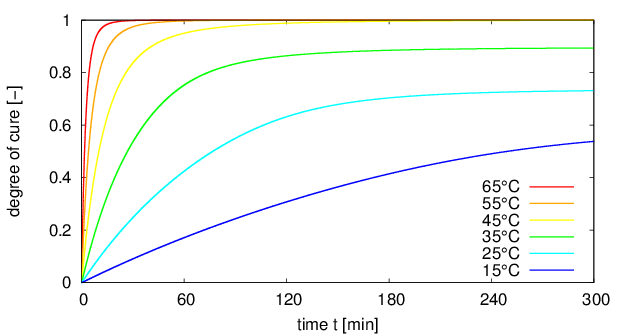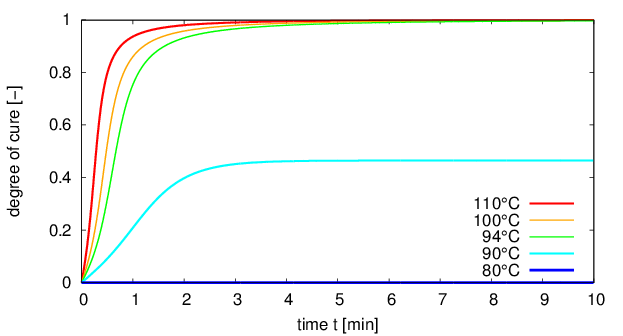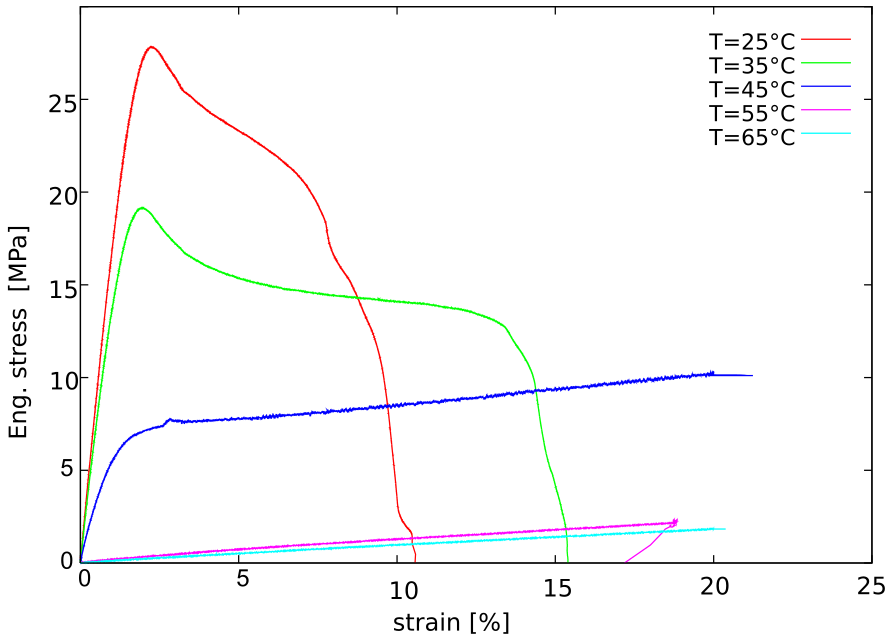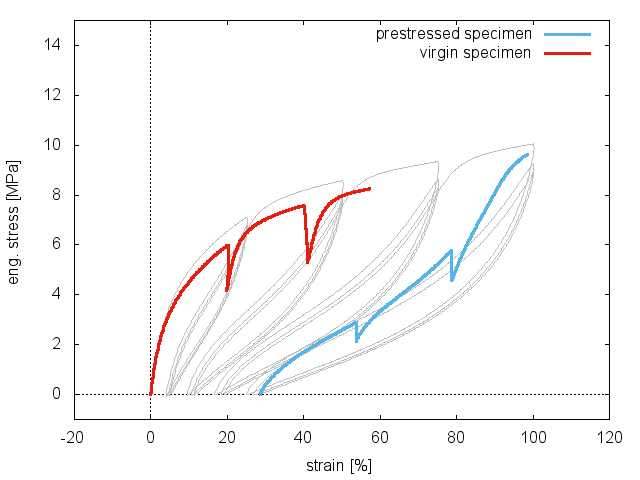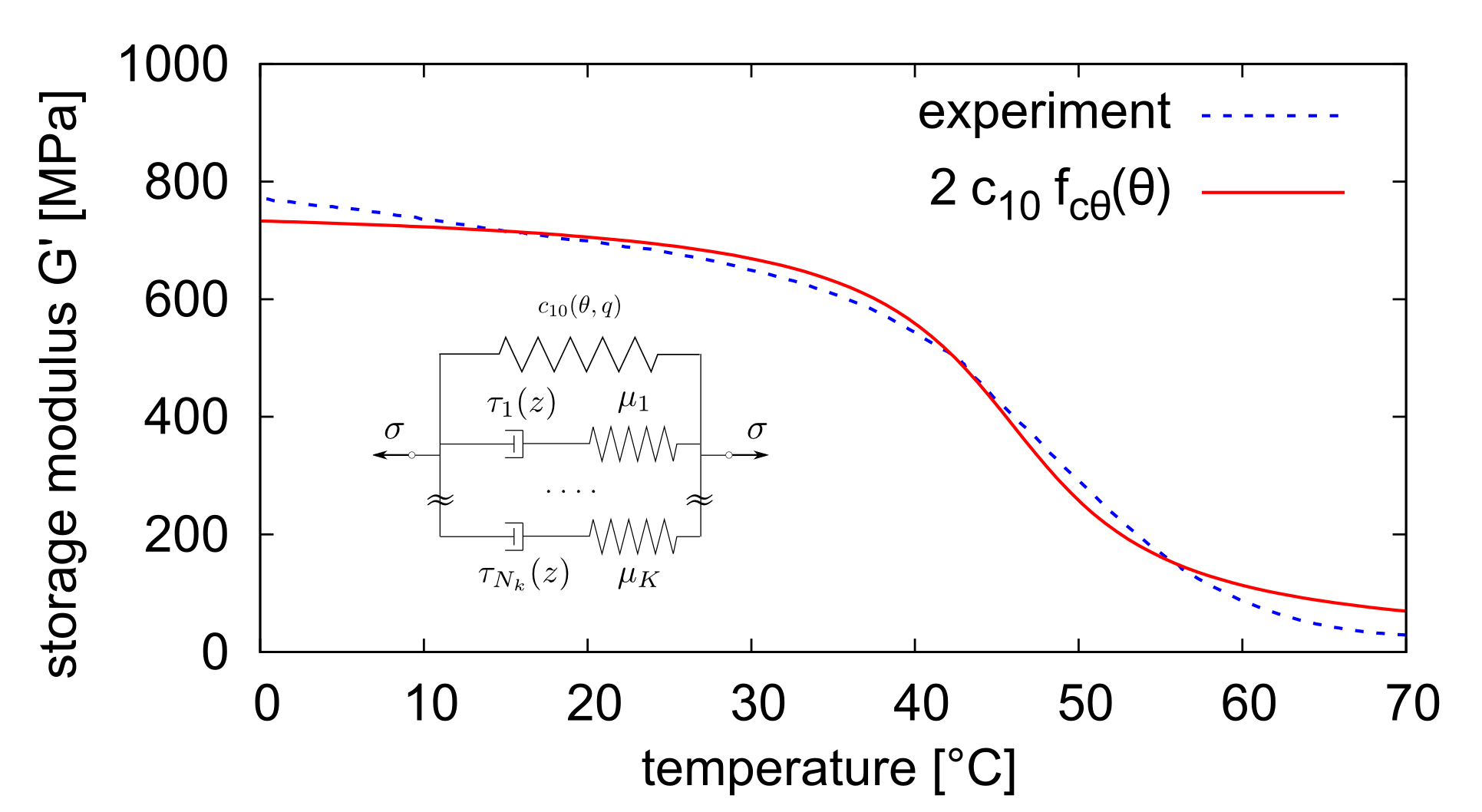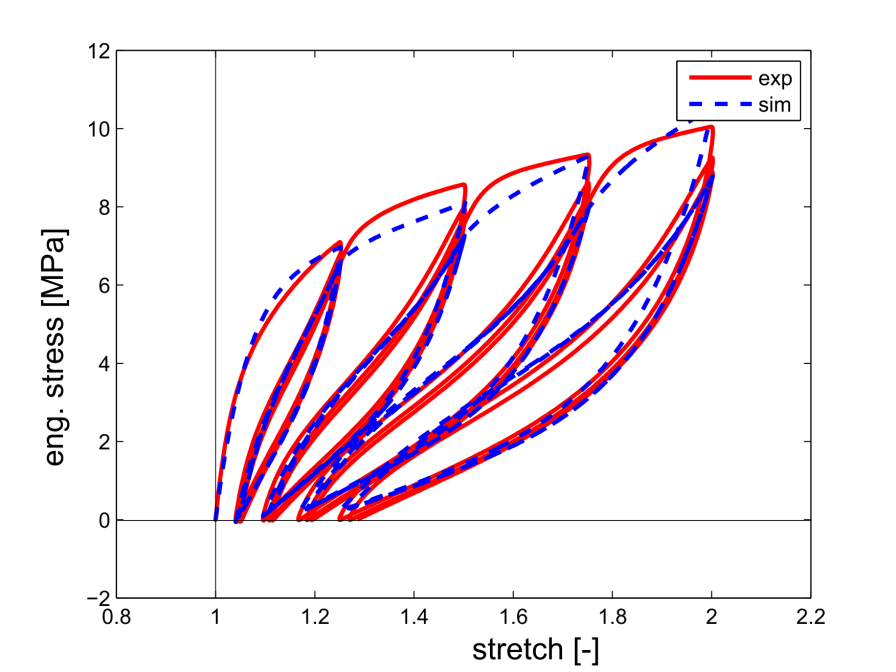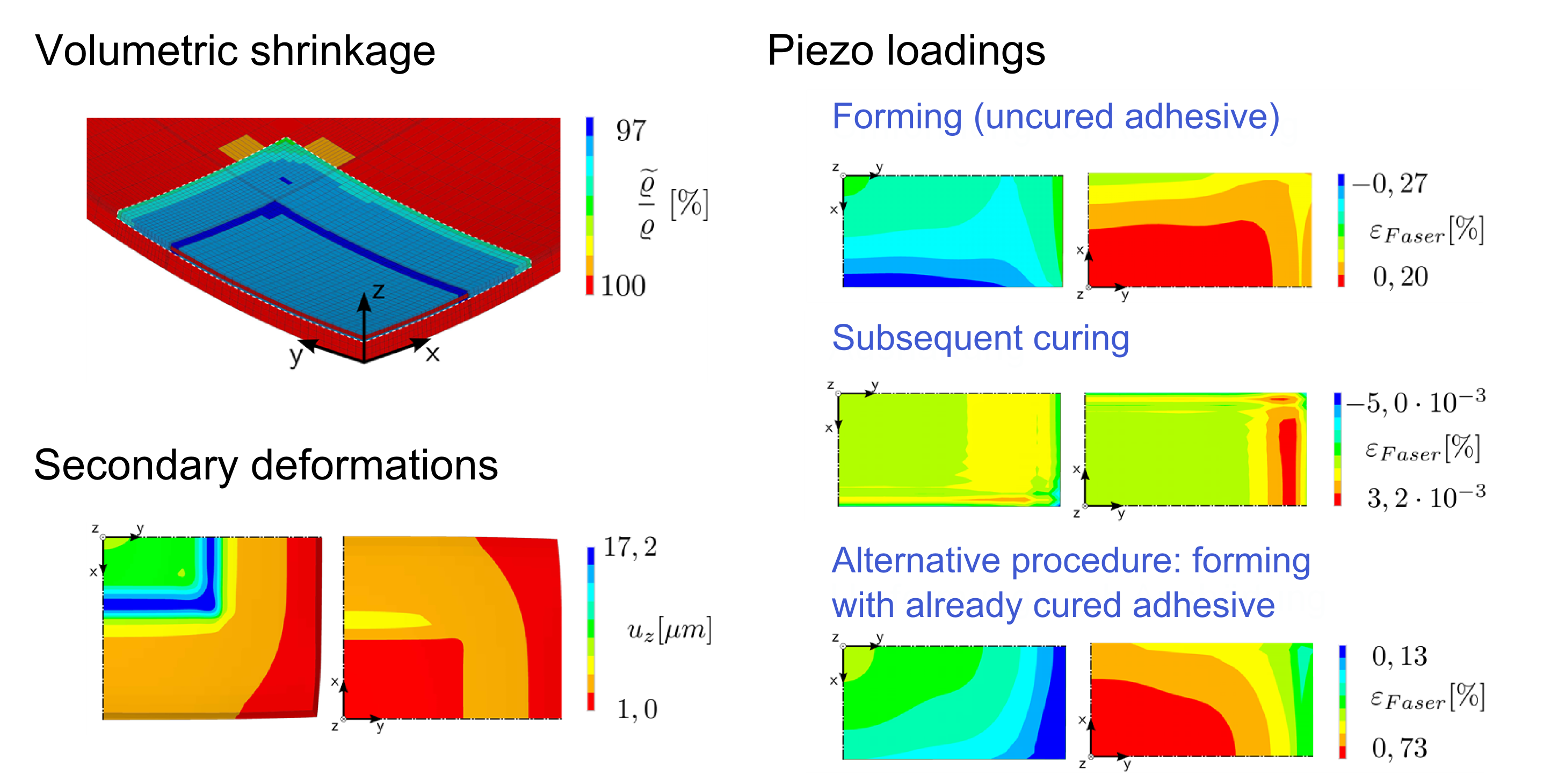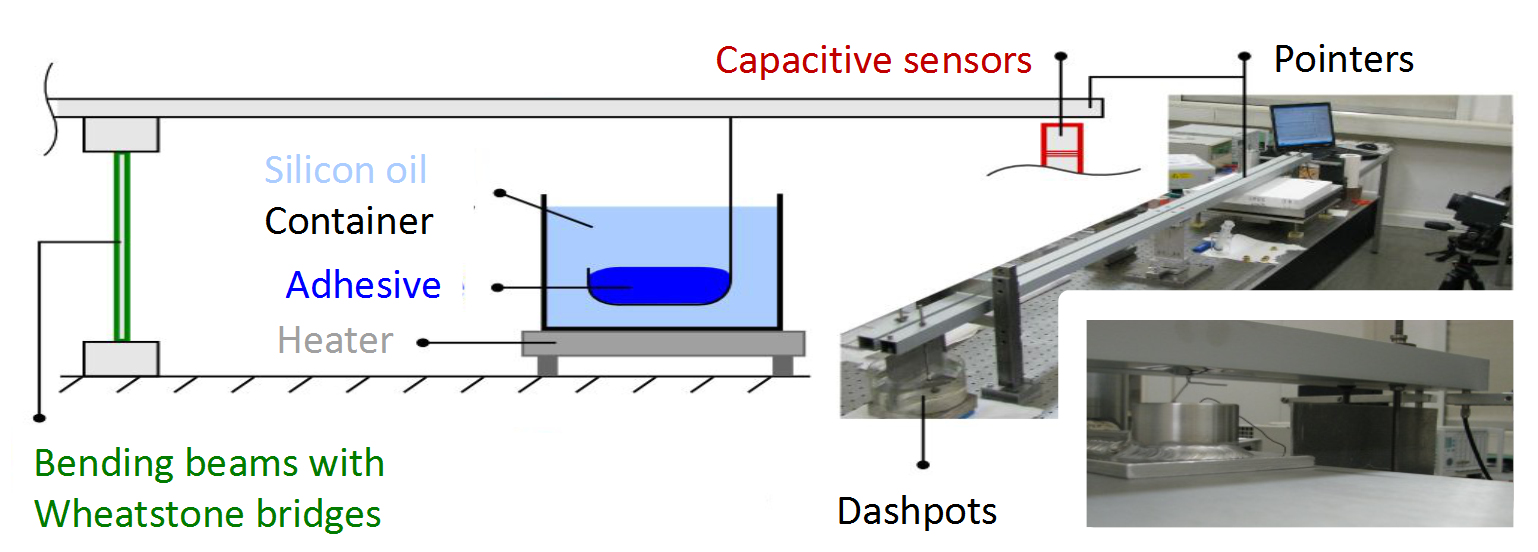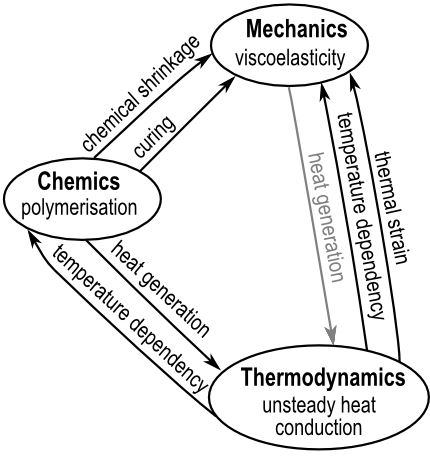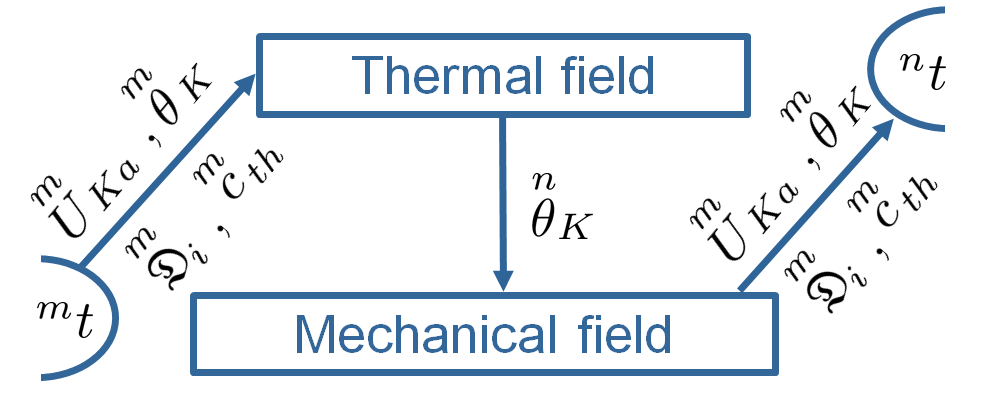Simulation of Curing and Shrinking Processes of Joining Materials in malleable Piezo-Metal-Compounds
J. Ihlemann
Aims
Process chain Forming
|
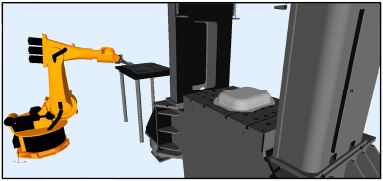 |
Conceptual approach of the process chain Forming
 |
Subproject C07
- Simulation of gelation and curing
- Integrated implementation of the simulation concept in cooperation with subproject B01
- Fully coupled thermo-mechanical-chemical simulation
- Calculation of residual stresses, secondary deformations and piezo loading
- Prediction of process windows by systematic parameter variations
- Investigation of optimal production processes
Results
Experimental characterization and phenomenological material modelling
|
Curing reaction and degree of cure: Differential Scanning Calorimetry (DSC) |
||||
|---|---|---|---|---|
|
|
Mechanical properties |
||||
|---|---|---|---|---|
|
|
Thermomechanically coupled material model |
||||
|---|---|---|---|---|
|
|
Finite element modelling |
||||
|---|---|---|---|---|
|
Methods
|
Material characterization |
|
|---|---|
|
|
Material modelling and parameter identification |
|
|---|---|
|
Material modelling
Parameter identification
|
|
|
FEM simulation tools |
|||
|---|---|---|---|
|
|
Publications
Reviewed Publications
|
[Shu13a] |
Shutov A V, Landgraf R, Ihlemann J (2013) |
|
[Lan14] |
Landgraf R, Scherzer R, Rudolph M, Ihlemann J (2014) |
|
[Kie16] |
Kießling R, Landgraf R, Scherzer R, Ihlemann J (2016) |
|
[Rud16] |
Rudolph M, Naumann C, Stockmann M (2016) |
|
[Lan16a] |
Landgraf R (2016) |
|
[Lan17] Landgraf R, Ihlemann J (2017) |
Other Publications
|
[Neu11] |
Neugebauer R, Ihlemann J, Lachmann L, Drossel W-G, Hensel S, Nestler M, Landgraf R, Rudolph M (2011) |
||
|
[Lan11a] |
Landgraf R, Ihlemann J (2011) |
||
|
[Lan11b] |
Landgraf R, Ihlemann J, Kolmeder S, Lion A (2011) |
||
|
[Lan12] |
Landgraf R, Ihlemann J (2012) |
||
|
[Neu13] |
Neugebauer R, Ihlemann J, Lachmann L, Drossel W-G, Hensel S, Nestler M, Rudolph M (2013) |
||
|
[Shu13b] |
Shutov AV, Landgraf R, Ihlemann J (2013) |
||
|
[Rud14] |
Rudolph R, Landgraf R, Ihlemann J (2013) |
||
|
[Dro15] |
Drossel W-G, Müller R, Ihlemann J, Rudolph M, Hensel S, Nestler M (2015) |
||
|
[Lan15] |
Landgraf R, Shutov A V, Ihlemann J (2015) |
||
|
[Rud15] |
Rudolph R, Landgraf R, Ihlemann J (2015) |
||
|
[Lan16b] |
Landgraf R, Ihlemann J (2016) |
[Lan17] |
Landgraf R, Ihlemann J (2017) |
Contact
Managing Director:
Prof. Dr.-Ing. habil. Jörn Ihlemann
Chemnitz University of Technology
Fakultät für Maschinenbau
Professur Festkörpermechanik
09107 Chemnitz
Telephon: +49 371 531-36946
E-Mail: joern.ihlemann@…


